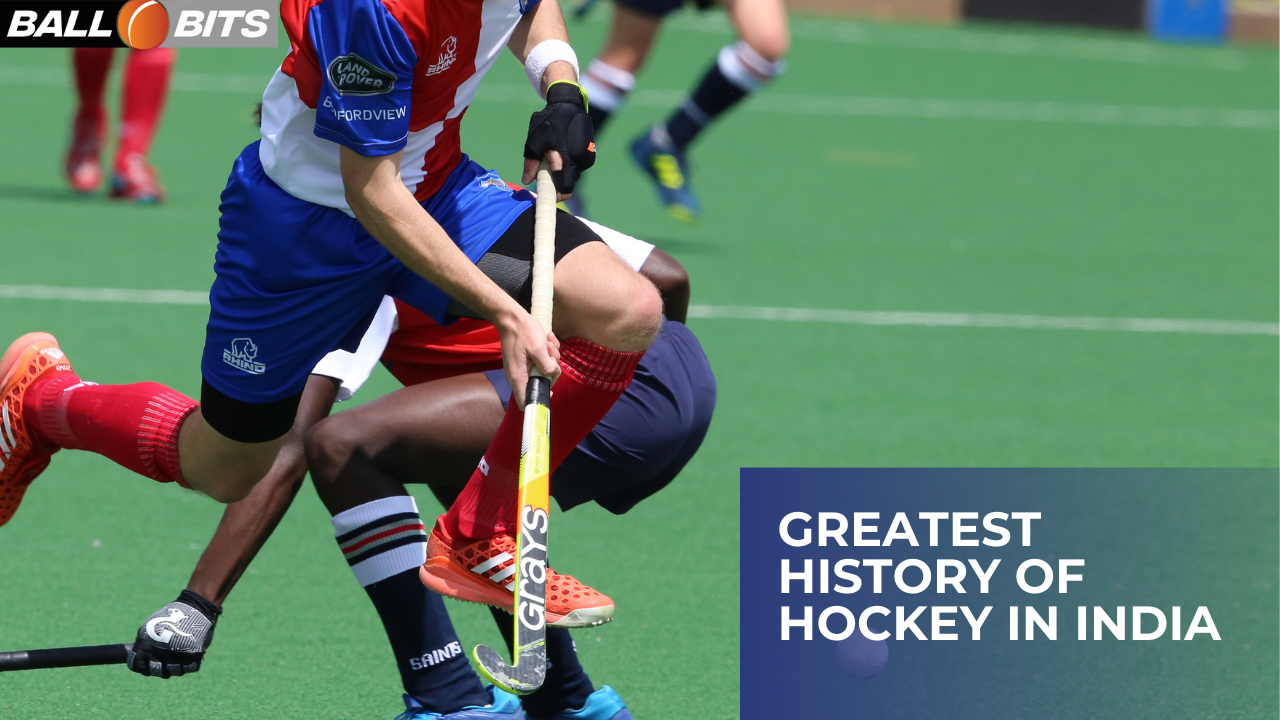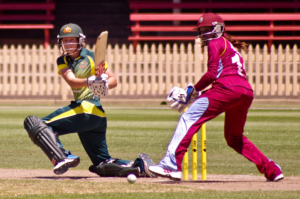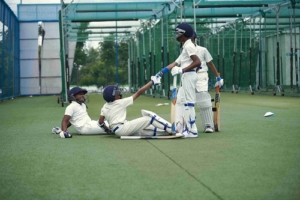
The history of hockey in India traces its origins to the 16th century, making it one of the world’s premier sports with a rich Olympic legacy. The sport’s evolution can be traced back to its ancient forms, such as a primitive version played in Egypt around 4,000 years ago.
However, the more recognizable version of modern field hockey began to take shape in Scotland in 1527, known as ‘hokie,’ where players used sticks to manoeuvre a small ball.
The British later refined this early version into the modern-day field hockey we know today, during the late 18th to early 19th century. Initially introduced as a popular school game, field hockey found its way to the Indian army during the British colonial rule in the 1850s.
With abundant open spaces for playing fields and simple equipment requirements, the sport gained popularity among children and young adults in India. India’s first hockey club was established in Calcutta (now Kolkata) in 1855.
Over the following decades, national tournaments like the Beighton Cup in Calcutta and the Aga Khan tournament in Bombay (now Mumbai) further propelled the sport’s popularity, particularly in regions like Bombay and Punjab.
While discussions about forming a hockey association in India surfaced in 1907 and 1908, it wasn’t until 1925 that the Indian Hockey Federation (IHF) was established, following the formation of the International Hockey Federation (FIH) in 1924.
In 1926, the IHF organized its inaugural international tour to New Zealand, during which the Indian men’s hockey team participated in 21 matches, emerging victorious in 18. Notably, this tournament introduced the world to a young Dhyan Chand, who would later earn the distinction of being one of the greatest hockey players in history.
Before 1924, the relationship between hockey and the Olympic Games had been intermittent, with the sport only featuring in 1908 and 1920, and omitted from other editions.
The establishment of the FIH as a global governing body solidified hockey’s place in the Olympics, beginning with the Amsterdam Games in 1928. The Indian Hockey Federation secured FIH membership in 1927, ensuring India’s participation in the 1928 Olympics.
This marked the commencement of a remarkable legacy for Indian hockey, characterized by an impressive collection of eight gold medals – a record that remains unmatched to this day.
Let’s explore the history of hockey in India in detail below:
Olympics domination in the history of hockey in India:
The journey of the history of hockey in India has been a rollercoaster ride through Olympic history. Here’s a glimpse of the notable moments:
1928 Amsterdam Olympics:
In the 1928 Amsterdam Olympics, India participated as British India in its first-ever Olympic appearance. Although only a few officials from the Indian Hockey Federation initially saw them off, a warm welcome awaited them upon arrival.
Amidst nine competing teams, India found themselves in Group A with Belgium, Denmark, Switzerland, and Austria. The standout player was Dhyan Chand, a national hero whose remarkable skills led to India’s victory.
Dhyan Chand’s 14 goals, including a memorable hat-trick against finalist Holland, marked India’s first Olympic gold medal and a significant moment in the history of hockey in India.
1932 Los Angeles Olympics:
The journey to the 1932 Los Angeles Olympics took 42 days by sea. In a three-team competition, India set a new record by scoring 35 goals against both the United States and Japan.
The highlight was a remarkable victory over the host USA with a score of 24-1. This dominant performance secured India’s second consecutive Olympic gold medal. An outstanding event in the history of hockey in India.
1936 Berlin Olympics:
Under the leadership of Dhyan Chand, India continued its winning streak at the 1936 Berlin Olympics. Placed in Group A alongside Hungary, the United States, and Japan, India showcased their dominance by scoring 20 goals in the group stage without conceding any.
Dhyan Chand’s team then secured a 10-0 victory against France in the semi-finals, leading them to triumph in the final against Germany with an 8-1 score. This victory was remarkable, and even Hitler recognized Dhyan Chand’s skills, offering him German citizenship.
1948 London Olympics:
The 1948 London Olympics marked India’s return to the Olympics after the World War II hiatus. Competing as an independent nation, India’s hockey team secured their fourth consecutive gold medal.
In a packed Wembley Stadium, India defeated Great Britain 4-0, clinching the first gold medal for independent India and continuing its remarkable history in the sport.
1952 Helsinki Olympics:
In the 1952 Helsinki Olympics, India faced a knockout-style competition featuring 13 teams. With a bye in the first round, India advanced to the final after defeating Austria in the quarterfinals.
Facing the Netherlands in the final, India emerged victorious, securing their sixth consecutive Olympic gold medal. Balbir Singh’s 9 goals and Captain Digvijay Singh’s titles added to the country’s hockey legacy.
1956 Melbourne Olympics:
With stalwarts like Balbir Singh Sr, Leslie Claudius, Randhir Singh Gentle, and Ranganathan Francis, India continued its dominance at the 1956 Melbourne Olympics.
Competing against 12 teams in three groups, India’s path to victory included a narrow 1-0 win against Germany in the semi-finals and a triumphant 1-0 victory over arch-rival Pakistan in the finals. This win marked India’s sixth successive Olympic gold medal.
1960 Rome Olympics:
In the 1960 Rome Olympics, India’s gold-winning streak faced a setback. Led by Leslie Claudius due to Balbir Singh Sr’s retirement, India emerged as silver medalists, narrowly losing 0-1 to Pakistan in the final. Despite this interruption, India’s legacy in the sport remained strong.
1964 Tokyo Olympics:
Motivated by previous losses to Pakistan, the Indian hockey team, captained by Charanjit Singh, triumphed at the 1964 Tokyo Olympics.
Overcoming a fierce final against Pakistan, India secured their seventh Olympic gold medal. A lone goal by Mohinder Lal sealed their victory and marked another chapter in the history of hockey in India.
1968 Mexico Olympics:
As hockey gained global popularity, India’s dominance showed signs of waning. In the 1968 Mexico Olympics, India’s hockey team secured a bronze medal, which was their lowest Olympic finish at that time. Despite this, the team’s performance maintained India’s prominent position in international hockey.
1972 Munich Olympics:
With a new squad, including captain Harmek Singh, India competed in the 1972 Munich Olympics. Undefeated in the group stage, India’s journey was disrupted due to the tragic incident involving the Israeli team. India finished third, securing a bronze medal by defeating the Netherlands.
1976 Montreal Olympics:
Astroturf altered the hockey playing surface, and India’s performance in the 1976 Montreal Olympics faced challenges. Despite a strong history, India’s team finished seventh, marking a shift in the competitive landscape of the sport.
1980 Moscow Olympics:
Returning to the podium, India clinched a gold medal in the 1980 Moscow Olympics. A reduced tournament size resulted in India’s victory, signalling a strong comeback. However, this was the last Olympic gold medal for India in hockey.
1984 Los Angeles Olympics:
Facing new challenges, India participated in the 1984 Los Angeles Olympics. Despite placing fifth, the team’s efforts reflected India’s resilience in a changing hockey landscape.
1988 Seoul Olympics:
Struggling with internal issues, India’s 1988 Seoul Olympics performance was marred by challenges both on and off the field. A sixth-place finish underscored the complexities faced by the team.
1992 Barcelona Olympics:
Participating in the 1992 Barcelona Olympics, India struggled to make a mark, finishing seventh. Despite the challenges, the team’s commitment remained central to the history of hockey in India.
1996 Atlanta Olympics:
The 1996 Atlanta Olympics saw mixed results for India. While the men’s team ended eighth, the women’s team showcased their potential, marking their second Olympic appearance.
2000 Sydney Olympics:
In the 2000 Sydney Olympics, India’s performance demonstrated a mixture of successes and challenges, leading to a seventh-place finish.
2004 Athens Olympics:
The 2004 Athens Olympics marked a challenging phase for India’s hockey legacy. Despite finishing seventh, the team continued to strive for excellence.
2008 Beijing Olympics:
India’s absence from the 2008 Beijing Olympics marked a significant moment in their Olympic journey. The team’s failure to qualify highlighted the evolving nature of international hockey competition.
2012 London Olympics:
Facing tough competition, India’s performance in the 2012 London Olympics resulted in a lower finish. The team’s efforts, however, reflected their commitment to the sport’s legacy.
2016 Rio Olympics:
In 2016, India’s men’s hockey team demonstrated resilience in a fiercely competitive environment, securing a podium finish with a bronze medal. The women’s team also made history by reaching the tournament and achieving their best-ever fourth-place finish.
2021 Tokyo Olympics:
India’s hockey journey in 2021 showcased both triumph and determination. The men’s team secured a thrilling bronze medal victory, adding another chapter to India’s storied hockey history.
The women’s team, while missing out on a medal, achieved a historic fourth-place finish, underscoring their progress and potential in the sport.
Women’s hockey team at international level:
The 1970s marked an era of expansion for hockey, transcending the Olympic stage with the inaugural Hockey World Cup in 1971 held in Spain. While Pakistan claimed victory and India secured third place, the sport’s popularity was on the rise in Europe, accompanied by innovative changes.
India continued to excel, achieving another bronze at the 1972 Munich Olympics and reaching the World Cup final in 1973, though they fell short against the Netherlands.
Amidst predominantly male representation in global hockey, the women’s team stepped onto the international scene, debuting in the first-ever Women’s Hockey World Cup in 1974, where they admirably secured fourth place. This event was a prominent part of the history of hockey in India.
A turning point emerged as the men’s team clinched their sole World Cup title in 1975.
However, the shift to astroturf surfaces during the 1976 Montreal Olympics marked a new phase. The men’s hockey team of India finished seventh, ending the country’s Olympic podium streak for the first time. Similarly, the women’s team achieved a comparable result at the 1978 World Cup.
During this decade, the men’s squad also secured three consecutive silver medals at the Asian Games in 1970, 1974, and 1978.
Indian Hockey’s Triumphs on the International Stage:
Indian hockey’s legacy in the international arena is marked by remarkable achievements, particularly at the Olympic Games, evoking immense national pride. The Indian hockey team embarked on its Olympic journey in 1928, securing the nation’s inaugural Olympic gold medal.
From 1928 to 1956, the team’s remarkable prowess resulted in an impressive collection of six Olympic gold medals. This period, often referred to as the “golden age” of Indian hockey, witnessed an astounding feat of 24 consecutive victories, amassing 178 goals while conceding a mere seven. This era remains a cherished chapter in the history of Indian hockey.
The unforgettable winning streak came to a halt in the 1960 Rome Olympics, where the team faced a 0-1 defeat in the finals against the Pakistan Hockey team. Nonetheless, India’s storied dominance in the sport left an indelible mark. It also left a mark on the history of hockey in India.
In the subsequent 1964 Tokyo Olympics, the Indian hockey team bounced back, clinching a gold medal. Their resilience and skill continued to be showcased as they earned several bronze medals in subsequent tournaments, including the 1980 Moscow Olympics.
Unfortunately, the trajectory of Indian hockey’s performance at the Olympic Games took a downturn post-1980, with the team facing challenges in securing medals. The struggles on this grand stage marked a transitional phase for the sport.
Beyond the Olympics, another milestone in Indian hockey’s history was the victory of the Indian Men’s Hockey team at the 1975 Hockey World Cup in Kuala Lumpur, Malaysia. This achievement added to India’s illustrious hockey journey and further solidified its reputation on the global map.
Additionally, the Indian women’s hockey team demonstrated their prowess by securing gold in the 2002 Commonwealth Games held in Manchester, England. This triumph highlighted the growing prominence of women’s hockey and underscored India’s capabilities in the sport across genders.
Through victories, challenges, and moments of glory, the history of hockey in India is defined by its exceptional performances on international platforms.
Conclusion:
Recent exceptional accomplishments by the national team have rekindled a fervent passion for hockey. This resurgence presents an opportune time for the upcoming generation to contemplate the sport earnestly and revive its past magnificence.
India’s storied legacy in the history of hockey in India, including boasting an impressive medal count including numerous golds, serves as a powerful incentive. While cricket may currently dominate in terms of popularity, there’s no doubt that hockey is on the path to reclaiming the reverence it once held.
Also, check out How to Play Kabaddi









